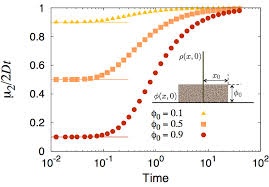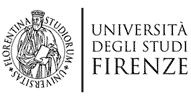Molecular Crowding
The standard model of diffusion assumes Fick's law, namely that the rate at which one substance diffuses through another is directly proportional to the concentration gradient of the diffusive substance. However one might expect nonlinear corrections in various situations e.g. if obstacles are present or if there is more than one species at high concentrations. Indeed many reports of anomalous behavior can be found in the literature. Particularly important are the applications to biology where a large ensemble of microscopic entities (e.g. proteins, macromolecules) are densely packed in space. The intracellular compartment is in fact extremely crowded with macromolecules, subcellular compartments, and confinement domains, facts that call for an extended theory of diffusion-limited reaction rates, fully justified from first principles. Applications include the arrival of a receptor at a localized reaction site on the surface of an immune cell, a key step in the signaling cascade responsible for activating the cell, and/or a promotor protein searching for its binding site on DNA. The effect of crowding is very often quantified by resorting to phenomenological fittings, which lack a consistent dynamical explanation. A systematic approach to the modeling of biological, biochemical and related requires instead starting from plausible microscopic rules, which effectively encapsulates the information of limited spatial resources. Crowding is hence directly related to the depletion of resources on which the particles rely for their diffusive motion at the microscopic level, including space. We aim at to studying the problem of diffusion of a target particle embedded in a surrounding sea of indistinguishable elements of analogous and/or different sizes and elaborate on physically sound definitions of self and global diffusion coefficients of inert particles. At a higher level of complexity, we aim at considering active matter systems at different scales (from molecular motors to bacteria) where each individual burns energy from the surrounding or from internal depots in order to move and perform work on the environment.




